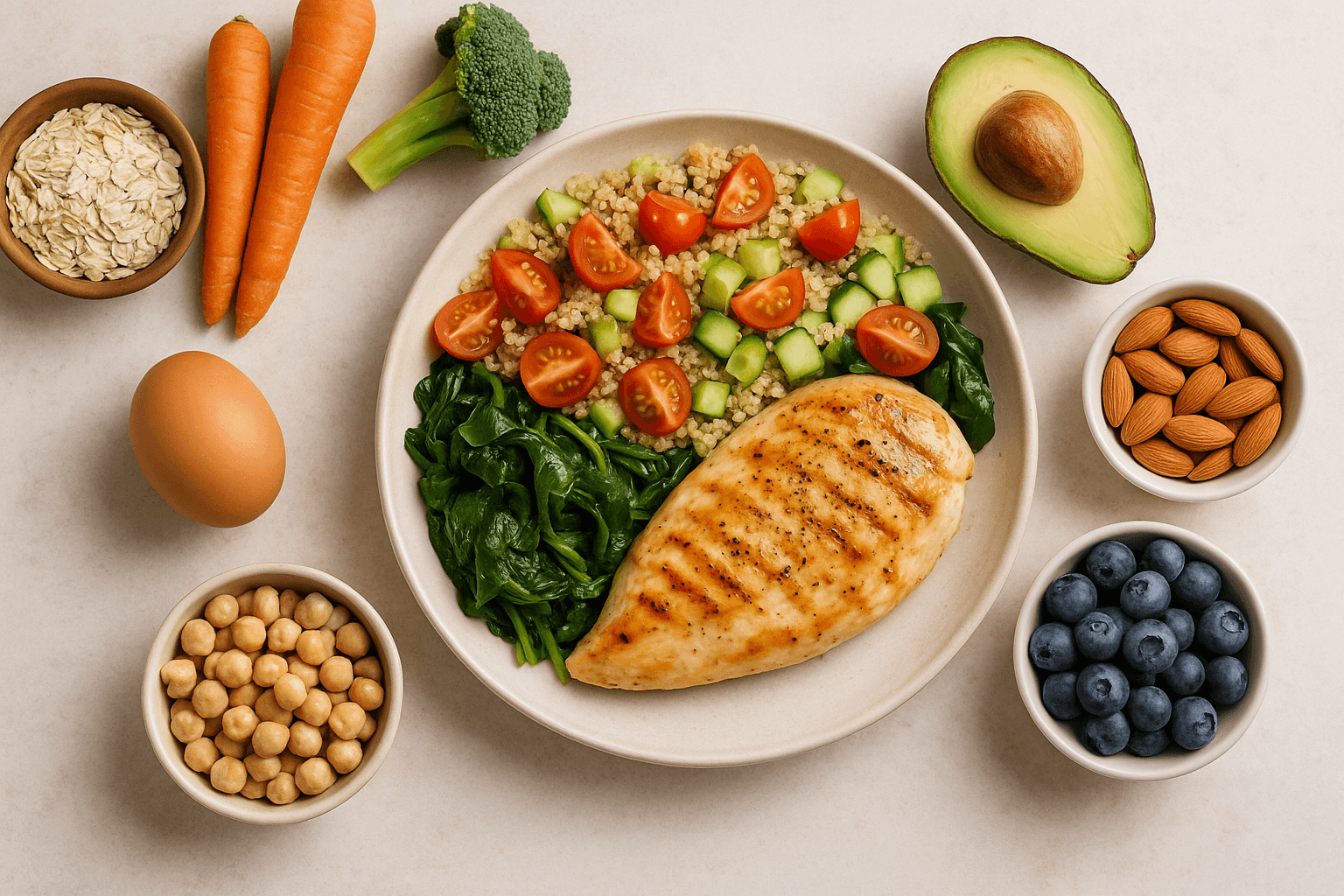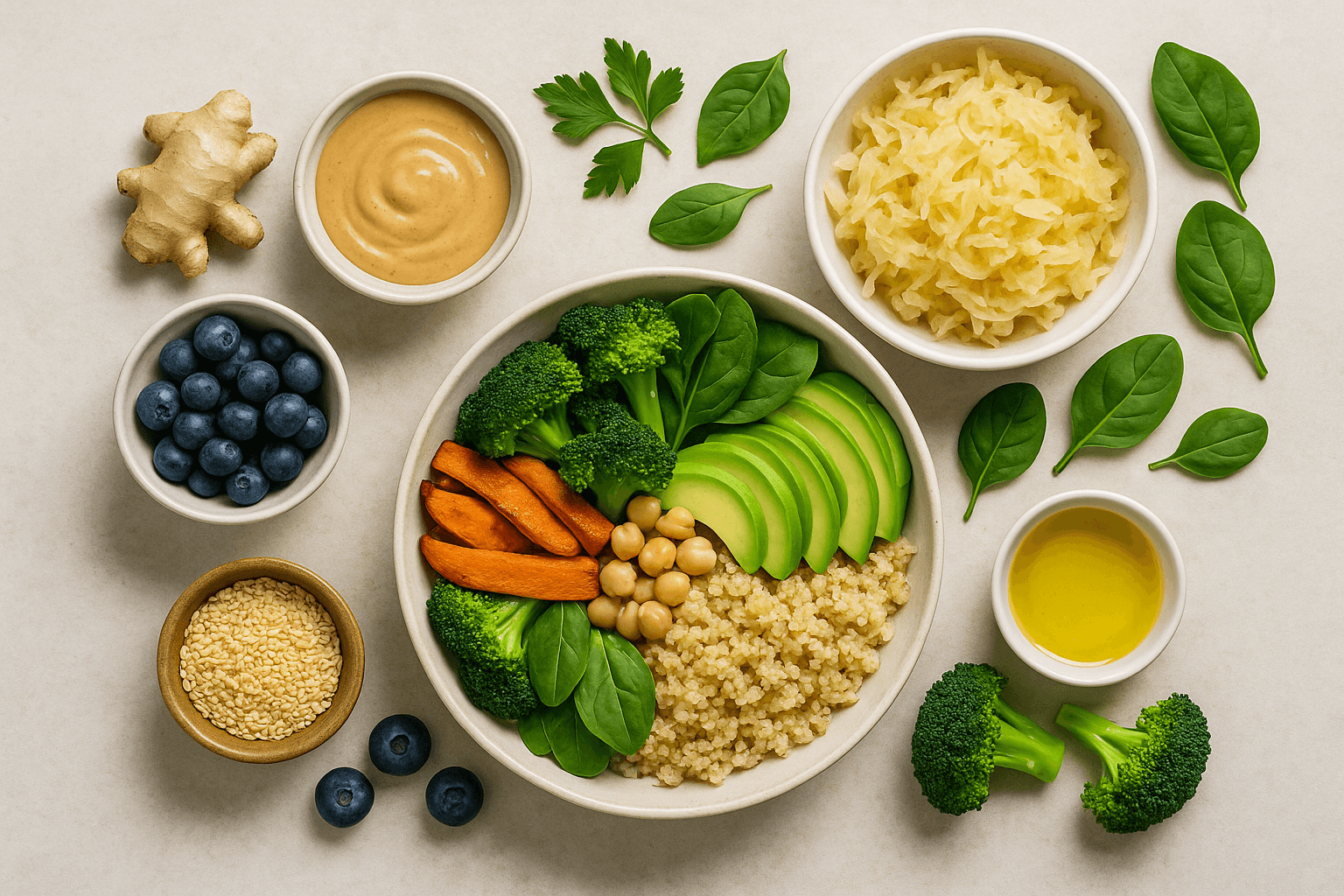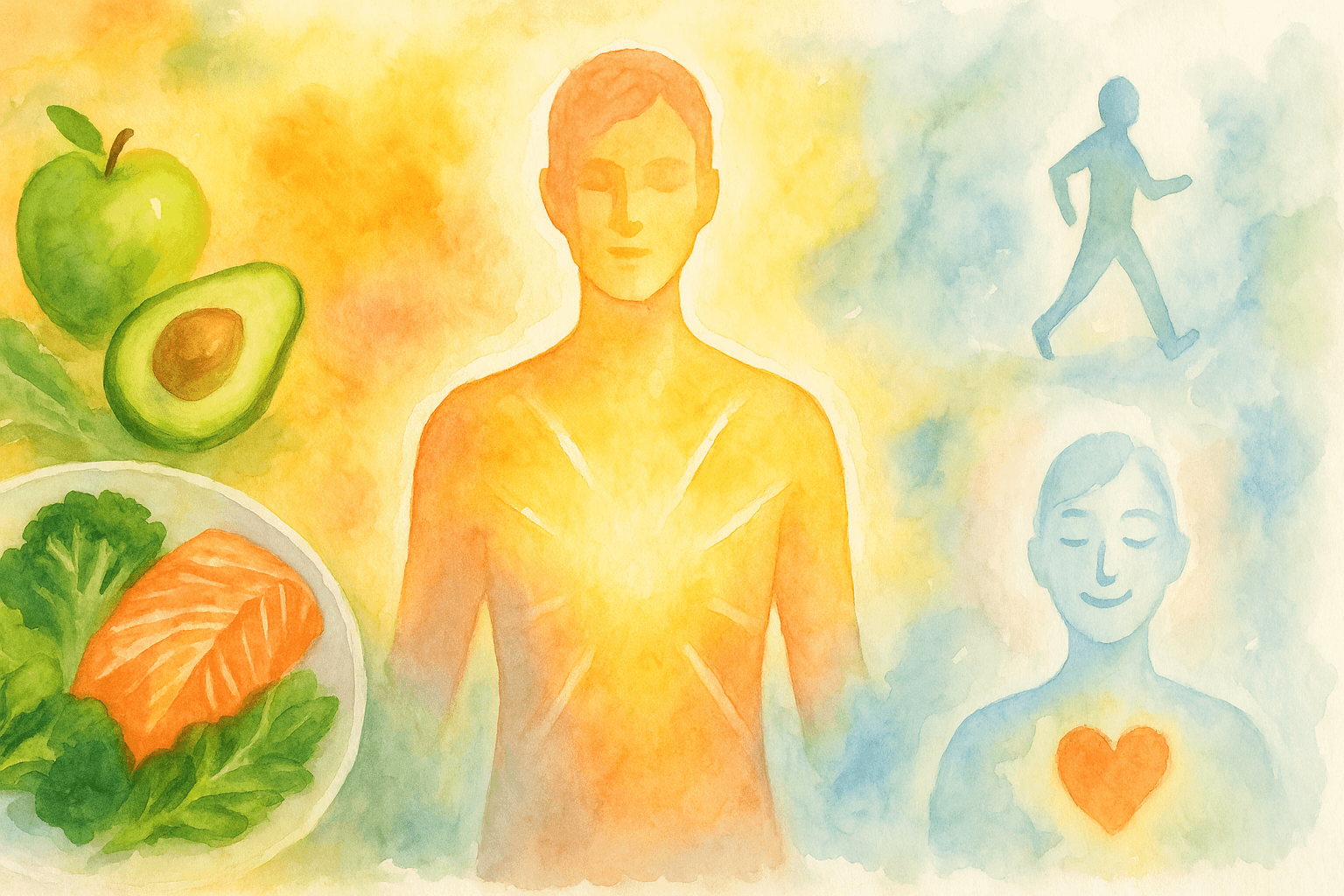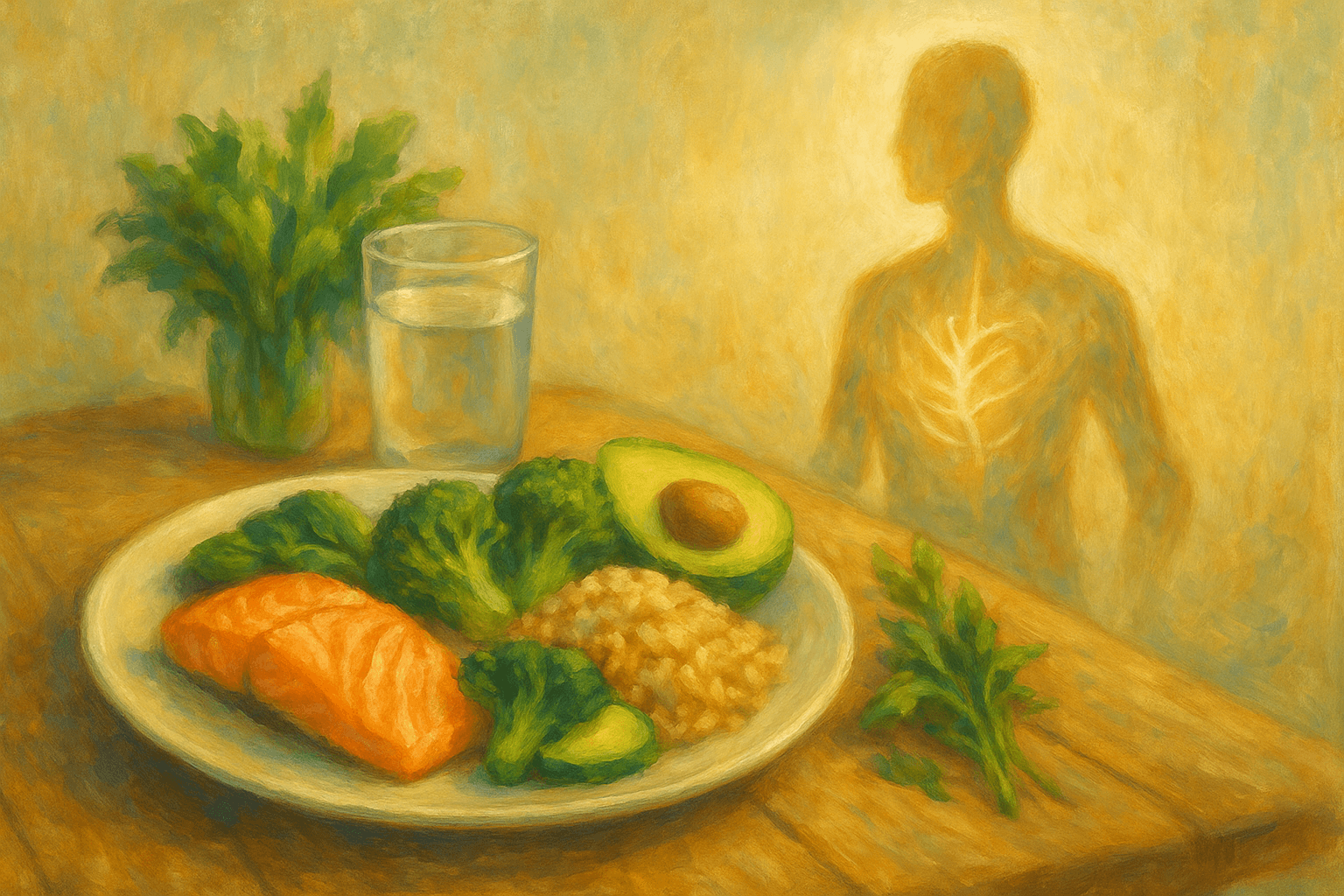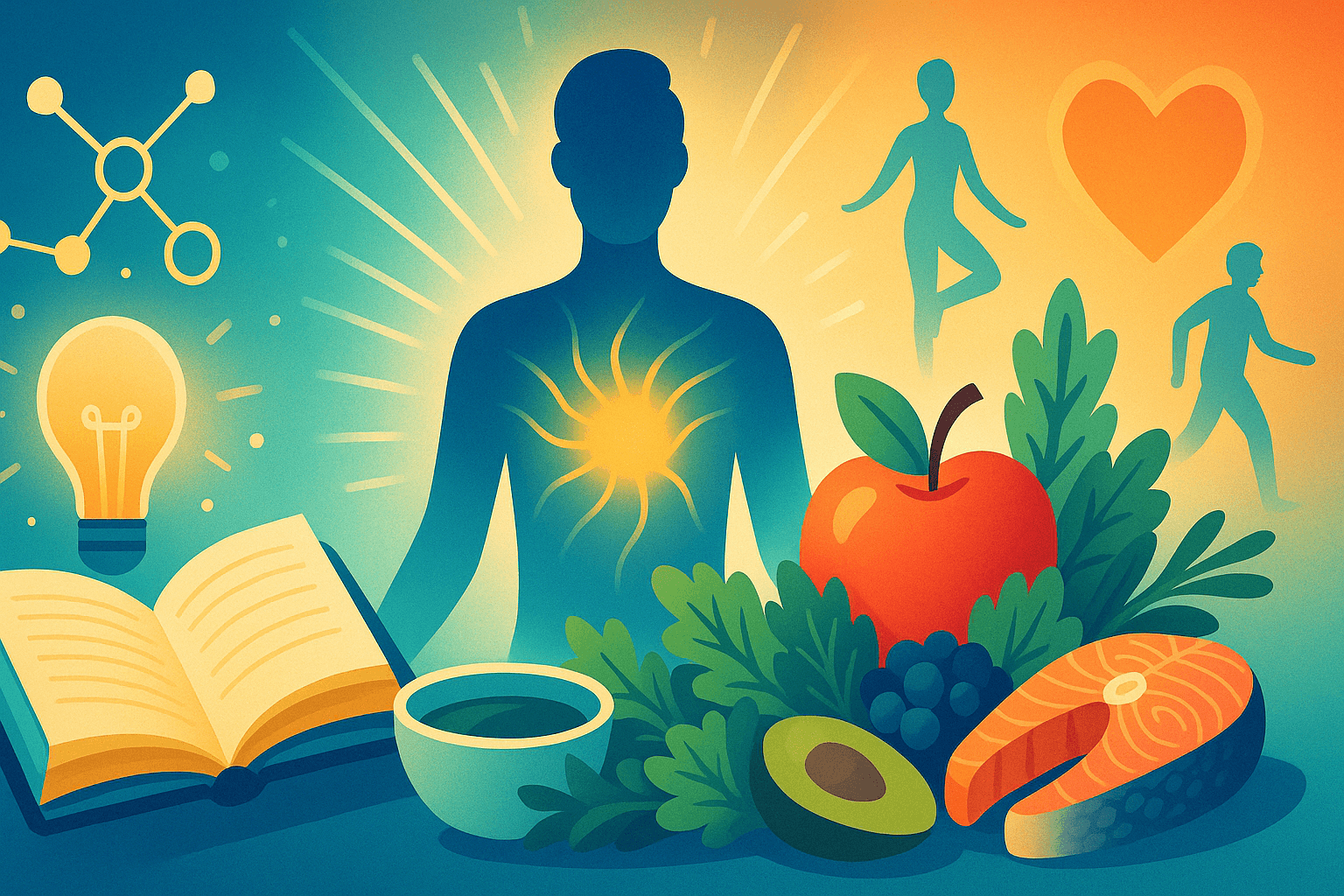BEYOND SUGAR: THE UNSUSPECTED ROLE OF INFLAMMATION IN DIABETES—AND HOW DIET CAN HEAL
Published on August 14, 2025
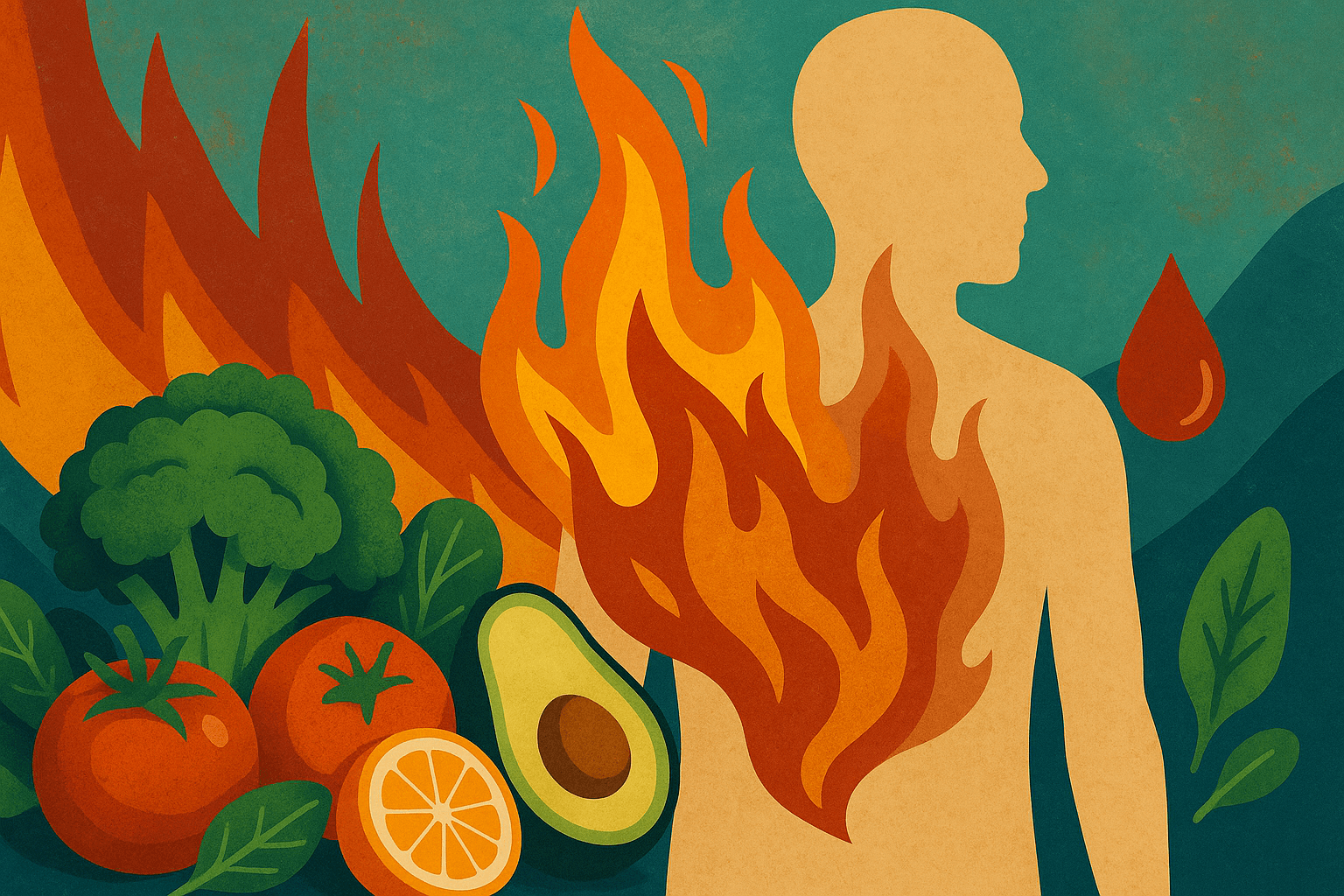
Most everyone who hears the word “diabetes” thinks of sugar: tablespoons in your coffee, carbs in your pasta, that blood glucose number you fixate on. We’ve all heard our share of stern lectures about sugar, read labels featuring “diabetic-friendly” foods, or even structured our entire way of managing diabetes around carbohydrates and insulin. But what if the discussion around diabetes is overlooking a potent, unseen catalyst? What if the actual villain — and a key economic source for intervention — is chronic, low-grade systemic inflammation smoldering in the background?
The reality, as we’re learning from front lines of diabetes research, is that inflammation simply isn’t a bit player in the development of diabetes. It’s a protagonist quietly fueling insulin resistance, stress on the pancreas and damage to blood vessels, and opening the door to the heart, kidney and vision problems that often accompany diabetes. The good news? Everything you consume has the potential to fuel the fire or douse it. This is where a hope-tweaked chapter in diabetes care opens.
What Is Inflammation, and What Does It Have to Do With Diabetes?
Think of inflammation as your body’s alarm system — your built-in superpower that is a necessary part of the healing process. When you scrape your knee, fend off a cold or fight bacteria, inflammation kicks in to save you. In these short bursts, it’s lifesaving and crucial: When immune cells arrive to clear and repair, it tells them to produce a cocktail of molecules that foster speedy restoration.
But if the alarm fails to shut off — if the immune system is turned up when there is no real threat — you have chronic inflammation, the “slow burn” that is associated with heart disease, diabetes and other metabolic disorders. It quietly harms tissues, sabotages blood vessels and sows trouble in organs throughout the body.
And in type 2 diabetes and pre-diabetes, that’s exactly what occurs. Prolonged inflammation interferes with how your cells respond to insulin, the hormone that enables the sugar to leave your blood and enter your muscles and brain. When cells ignore insulin’s message, your pancreas must work extra hard, churning out greater and greater amounts of insulin to keep blood sugar down. Over years, this wears on the insulin-producing beta cells, causing glucose to rise and requiring more medication or insulin shots. Inflammation also vastly increases the odds of complications — heart attacks, strokes, nerve damage, and kidney dysfunction — even for people with type 1 diabetes.
So, diabetes isn’t merely a “sugar problem.” It is at heart an inflammatory disorder, and it sets the rest of your body on fire.
Where Does Inflammation Come From?
Inflammation is whipped up by so much. Visceral fat — the type that gathers around your organs — is especially “inflammatory,” releasing chemical messengers that keep the immune system on high alert. Chronic stress, bad sleep, air pollution, smoking and even genetics can also pour gasoline on the fire. But for most of us, diet is where the story starts getting interesting — and empowering.
The greatest dietary inducers of inflammation are ultra-processed foods, which are also rich in refined sugars and grains, industrial oils, trans fats and preservatives. These foods screw up the healthy bacteria in your gut, damage the lining of your intestines, and trigger immune responses that make insulin resistance and blood sugar problems worse. On the other hand, an eating plan chock-full of real, whole, and colorful foods is profoundly anti-inflammatory — giving your body the building blocks it needs to repair, to protect, and to flourish.
Top Anti-Inflammatory Diet Plans (and Diabetes Schemas)
Fill Your Plate With Color:
That’s because every color in the rainbow of your fruit and veggie consumption counts as a different team of plant compounds — antioxidants, phytonutrients, vitamins, minerals — that functions as firefighters to inflammation. Greens (spinach, kale, broccoli) promote cell repair, oranges and reds (think carrots, sweet potatoes, bell peppers) provide beta-carotene and vitamin C, and purples and blues (berries, eggplant, cabbage) are filled with anthocyanins that soothe inflammation and keep our heart healthy. Make “eating the rainbow” your daily focus and you will literally crowd out less nutritious choices.
Choose Whole Grains Over Refined:
Fiber is the secret weapon in the battle for both gut health and blood sugar balance. Oats, barley, quinoa, buckwheat and brown rice are slower to digest, which helps to keep blood sugar levels stable and serves as food for the good bacteria in your gut — a bacteria that produces anti-inflammatory compounds as it digests fiber. Refined grains, by contrast, are divorced of nutrients and fiber, eaten too quickly, and leave you hungry, cranky and inflamed.
Favor Healthy Fats:
Fats are not your enemy — at least, not all of them. Omega-3 fatty acids (abundant in salmon, sardines, walnuts, flaxseed, chia seeds and algae) have demonstrated anti-inflammatory action, helping to shield blood vessels and desensitize overactive immune cells, even while elevating mood. Daily fats from sources like extra-virgin olive oil, avocado, almonds and pumpkin seeds provide fast energy with a satisfying backbone of taste, and help us work more fish and plants into our diet because they make it easier to stick to a diet that tastes good. The fats to minimize? Anything processed, and anything deep-fried (especially if it has partially-hydrogenated oil) on the label.
Go Plant-Forward With Protein:
Protein isn’t only about muscle—it’s necessary for steady blood sugar, fullness, and cell repair. Beans, lentils, tofu, tempeh, nuts and seeds provide protein, as well as fiber, antioxidants and plant compounds that reduce inflammation. Even if you like lean meats or fish, more meals centered around plant proteins can lead to big dividends in blood sugar, cholesterol levels and inflammation.
Include Fermented and Fiber-Rich Foods:
Trillions of bacteria reside in your gut, and they have a direct impact on inflammation. Yogurt, kefir, sauerkraut, kimchi and fermented pickles — probiotics, or friendly bacteria that aid in regulating immunity. Foods that are high in fiber — such as berries, beans, whole grains, onions and garlic — are prebiotics, feeding the beneficial bacteria in your gut and helping the gut lining to stay strong and resilient.
Foods to Reduce for an Anti-inflammatory Diet Suitable for Diabetes
Ultra-Processed Foods:
Skip the packaged snacks, the sugary cereals, the shelf-stable baked goods, the fast food and the sugary soft drinks. These are designed to taste good and be convenient, not to be healthful, and they are a chemical cocktail of sugar, salt, bad fats and chemicals that drive inflammation at every level.
Excess Added Sugar:
Sugar lurks everywhere — in dressings, sauces, flavored yogurts, “energy” bars and even in savory foods. And while you needn’t fear a crisp apple or a handful of berries, eating added sugars day in, day out can serve as a “tug on the chain” (to quote an influential 2015 study on the subject) to systemic inflammation, a normalized state of inflammation that can in turn drive up both blood sugar and insulin levels that promote craving and have been implicated in excess fat storage.
Refined Carbs:
Foods that are made with white flour or polished white rice taste good but then convert to sugar too quickly in the body, causing your blood sugar to spike — and then crash, leaving you tired and craving even more of the stuff, devoid of the nutrients and fiber that keep your gut and metabolism in balance. Replace white bread, pastries and white rice with whole-grain options when you can.
Excess Alcohol:
Although some research has found that small amounts of red wine with dinner can reduce inflammation, regular or excessive drinking increases inflammation as well as blood pressure and complications, especially in people with diabetes.
Connection Between the Gut and Inflammation
The gut is often referred to, somewhat melodramatically, as the “second brain”—and with good reason. The trillions of microbes that make your gut home are in constant communication with your immune system and even your central nervous system. A healthy, diverse gut, in other words, functions like a kind of shield, protecting us from inflammatory diseases. A varied, fiber-rich, plant-based diet bolsters the gut barrier, fosters beneficial bacteria and teaches your immune system to respond less exuberantly.
But sugar- and processed food-laden diets high in unhealthy fats can break down the gut lining and create what is often called “leaky gut.” In this condition, toxins and particles of food can escape through the gut wall, setting off immune reactions that lead to chronic inflammation. That’s why feeding your gut — every single day — is one of the wisest actions you can take to cool inflammation and manage diabetes for the long run.
Sample Anti-Inflammatory Day for Diabetes
Breakfast:
Chia seed, walnut and blueberry overnight oats with a sprinkle of cinnamon and a quick spoonful of almond butter. This nightcrawler includes antioxidants, plant-based omega-3s, fiber and sustained energy — and it’s deliciously satisfying to boot.
Snack:
Sliced bell pepper and cucumber with a big scoop of hummus, or a crunchy apple with almond butter. Both snacks are high in fiber, vitamins and healthy fats, which promote gut health and take the edge off hunger.
Lunch:
A filling quinoa salad filled with chickpeas, roasted sweet potatoes, baby spinach leaves, pumpkin seeds, cherry tomatoes, and olive oil and lemon. This meal provides anti-inflammatory phytonutrients, fiber, protein, and tastes to savor.
Snack:
Full-fat Greek yogurt (a probiotic- and protein-rich magic-maker) with fresh raspberries and a little ground flaxseed or sunflower seeds.
Dinner:
Grilled salmon or tofu, unlimited steamed broccoli, wild rice, and a big spoon of sauerkraut or kimchi. The plate contains omega-3s, antioxidants, fiber, and probiotics for a gut-friendly, anti-inflammatory dinner feast.
Dessert:
A bowl of fresh berries or a square of dark chocolate. They tend to contain lots of antioxidants and also soul-soothing joy.
Lifestyle Tweaks That Will Improve the Rewards
Keep moving:
Regular physical activity is a strong anti-inflammatory. It may be a fast walking, a yoga practice, cycling, dancing, swimming. Training helps your body to use insulin properly and quiets stress hormones that generate inflammation. Consistency is more critical than perfection: 10-20 minutes a day could be right.
Get enough sleep:
Chronic sleep deficiency increases inflammation and makes it harder to manage blood sugar. Try to sleep for 7-9 hours without trouble and make a pre-sleep routine to help you relax – don’t use smartphone, adjust the lights and give your mind a break.
Manage stress:
Stress causes the same high-circulation hormones of inflammation. Deep breaths, meditation, vigils, inventive events like drawing or baking homemade cookies might be something you would enjoy or patting an animal can help calm your body. Regular, repetitive relaxation activities are far more useful than occasional big escapes.
Stay social and backstage:
Connecting isn’t just good for the inner self, it’s also more effectively anti-inflammatory. It reduces inflammation, enhances mood, and keeping good practices is easier. Have joyous times in a supportive environment, a meal close to you or the countryside, or, just spend time to talk and laugh on the phone with the closest ones.
Life Beyond Sugar: The Future of Diabetes Treatment
The future of diabetes care is moving away from carbs and drugs, and more towards an integrative approach that addresses the whole person by helping to reduce inflammation. Expect to see care plans that target good gut health, stress management, and nutrient-dense foods that promote healing—not just blood sugar numbers, as more and more health care providers acknowledge the importance of inflammation. Military-focused clinical research on personalized nutrition, microbiome health, and lifestyle medicine is changing the game.
Now, though, it’s no longer just about abstaining from sugar; it’s about crafting a life where every morsel, every exhalation, every jaunt and every good night’s sleep can add up to lower inflammation and stronger, steadier health.
Frequently Asked Questions
Q: Does sugar actually cause diabetes?
A: Diabetes is complex. While too much sugar is not the only cause, sugar-laden, high processed food diets lead to weight gain, insulin resistance, and chronic inflammation — all of which pave the way for diabetes. It's the overall picture, not one food.
Q: Can anything help inflammation including supplements?
A: Some supplements (omega-3s, turmeric, certain probiotics) can be helpful, but they won’t substitute for a diet rich with nutrients and plant-based foods. Supplements should serve to fill gaps, not to take shortcuts.
Q: I already have diabetes — is it too late to reverse inflammation?
A: Absolutely! Every time you make a positive change — eating more plants, moving every day, sleeping well, managing stress — you are reducing inflammation, which can lead to better blood sugar control, and may actually reduce the amount of medications you need.
Final Thoughts: The Power to Heal is on Your Plate
Living with diabetes can be overwhelming, but it’s also a chance to cultivate a new form of vitality and self-compassion. When you stop worrying about sugar and start loving your anti-inflammatory life, you are not just managing your blood sugar, you’re building a platform of energy, robustness, and joy that suffuses every part of your existence.
Each meal is an opportunity to heal yourself from the inside out, to douse the fire of inflammation, and to do your body good by helping it do what it does better than anything else: repair, restore, thrive. So, eat the rainbow, enjoy real food, move your body, rest well, manage your stress, and foster relationships that feed you. Diabetes is only one stop on your journey. One healthful, mindful choice at a time, you are writing a story of hope, strength and health—one day, one meal, one beautiful step at a time.



